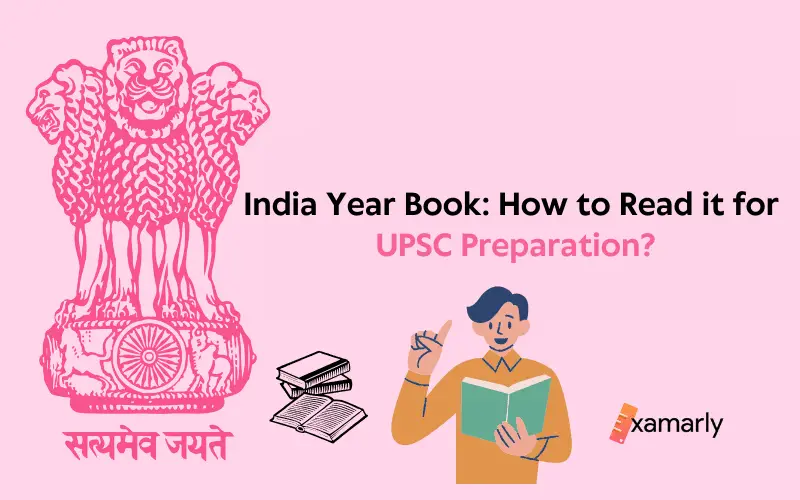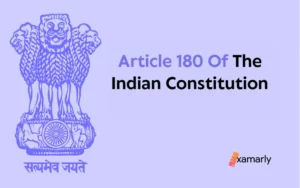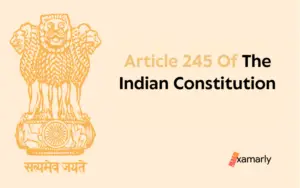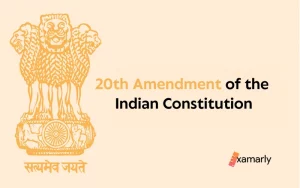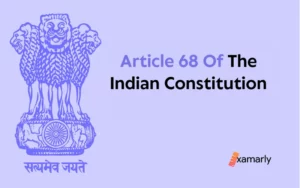This article will be your guiding tool to read the India Year Book efficiently so that you can get the maximum benefit out of it. What is India Year Book? Well, let us get started.
The India Year Book, an annual publication of the Indian government, publishes a report from each ministry. It provides a thorough summary of the nation’s advancements in a variety of areas. India Year Book is one of the most significant assets for UPSC aspirants.
Using this reference book for your preparation for the UPSC Civil Services Examination will ensure that you understand important historical events, topics, and concepts.
If you find it difficult to study the entire book, you can break it down into sub-sections such as Indian Polity, Geography, Economy, International Relations, and Social Policies.
- India Year Book: Key Details
- Significance Of The India Year Book In UPSC Preparation
- India Year Book for UPSC Exam? Learn How to Use it
- Important Chapters for UPSC
- Priority-wise Topics In India Year Book For UPSC Aspirants
- Subjects Rather than Chapters Approach
- How to Get the Most Out of India Year Book
- Conclusion
- FAQ's
India Year Book: Key Details
Here are some key details that one should be aware of if reading the India Year Book during the preparation.
India Year Book – At a Glance
The India Year Book (IYB) is an annual book that gathers data from government websites and divides it up into chapters based on whatever government agency the data originally came from.
There are 32 chapters in the book, but India Year Book 2022 has 33 chapters which are listed here in this article.
Who Publishes This Book?
India Year Book is published by the Ministry of Information and Broadcasting’s media division.
You can check out India Year Book Here.
What Does This Book Contain?
The India Year Book provides a thorough summary of the development of the nation in different fields.
It has detailed coverage of all aspects of development from urban to rural, infrastructure to industry, art and culture, science and technology, education and mass communication, defence, and health.
The Government of India’s programs and policies are thoroughly addressed because this is an official product. It’s a bestseller in various online bookstores.
The India Year Book includes reports from all the ministries in the Government of India, which are crucial for UPSC preparation. You should read these reports carefully. You should also know about the latest government policies and schemes.
The India Year Book also includes information on current affairs, public schemes, demographics, and trade.
The India Year Book contains 32 chapters, much more than a traditional yearbook. It’s hard to read from Page 1 to the end, but the content is extremely helpful for prioritizing and covering different aspects.
Significance Of The India Year Book In UPSC Preparation
If you want to perform well in the UPSC Civil Services Exam, you should familiarise yourself with the India Year Book. It supplies loads of information about the government of India and is especially useful when writing descriptive answers.
There are typically between 10 and 15 questions from the India Year Book, and it is wise to go through the book in its entirety rather than skimming through it for a glance.
UPSC hopefuls may use this book to study for the current events section of the civil service test. Candidates must focus on recent events up until the main exam of the current year.
This book appears to be the primary source for preparing extensive answers for the civil services test, including prelims and mains. It covers all government programmes and policies.
India Year Book for UPSC Exam? Learn How to Use it
Here are some tips to use the Year Book for UPSC Exam preparation.
The first thing to do when studying the IYB is to learn as much as you can about the country’s government.
Generally, 33 chapters cover the country’s various departments and ministries. Having said that, the IYB is quite lengthy, so students are advised to take notes while reading the book.
The second thing to do is to study the India Yearbook topic by topic. You can find information on different topics in it, including current affairs, industry to infrastructure, and the military.
You can use the table to figure out which chapters are most important to read, and which are not. You don’t have to byheart every single fact or an entire chapter, but you must memorize the approximate figures. These figures will help you answer the questions in the UPSC exam.
Important Chapters for UPSC
| Chapters in India Year Book 2022 | Topics |
| Chapter 1 | Dealing with the Pandemic |
| Chapter 2 | The Land and People |
| Chapter 3 | National Symbols |
| Chapter 4 | Polity |
| Chapter 5 | Defence |
| Chapter 6 | Law and Justice |
| Chapter 7 | India and the World |
| Chapter 8 | Basic Economic Data |
| Chapter 9 | Finance |
| Chapter 10 | Corporate Affairs |
| Chapter 11 | Commerce |
| Chapter 12 | Industry |
| Chapter 13 | Labour, Skill Development and Employment |
| Chapter 14 | Health and Family Welfare |
| Chapter 15 | Education |
| Chapter 16 | Welfare |
| Chapter 17 | Agriculture |
| Chapter 18 | Food, Civil Supplies and Consumer Affairs |
| Chapter 19 | Planning |
| Chapter 20 | Rural Development |
| Chapter 21 | Housing and Urban Affairs |
| Chapter 22 | Transport |
| Chapter 23 | Energy |
| Chapter 24 | Water Resources |
| Chapter 25 | Environment |
| Chapter 26 | Communications and Information Technology |
| Chapter 27 | Mass Communication |
| Chapter 28 | Culture and Tourism |
| Chapter 29 | Scientific and Technological Developments |
| Chapter 30 | Youth Affairs and Sports |
| Chapter 31 | States and Union Territories |
| Chapter 32 | Diary of National Information |
| Chapter 33 | General Information |
Priority-wise Topics In India Year Book For UPSC Aspirants
| First Priority | Second Priority | Third Priority |
| Dealing with the Pandemic; The Land and People | Law and Justice | Corporate Affairs |
| National Symbols | Finance | Labour, Skill Development, and Employment |
| Polity (It is advised to give Laxmikanth greater attention) | Commerce | Food, Civil Supplies, and Consumer Affairs |
| Defence | Industry | Housing and Urban Affairs |
| Basic Economic Data (It is advised to concentrate more on the Economic Survey) | Communications and Information Technology | Mass Communication |
| Welfare | Diary of National Events | Water Resources |
| Agriculture | General Information | Transport |
| Education | – | – |
| Energy | – | – |
| Environment (It is advised to concentrate more on the readingThe Hindu) | – | – |
| Health and Family Welfare | – | – |
| India and the World | – | – |
| Planning | – | – |
| Culture and Tourism | – | – |
| Scientific and Technological Developments | – | – |
| Rural Development | – | – |
| Youth Affairs and Sports | – | – |
| States and Union Territories | – | – |
India Year Book – Important Chapters to Read
Subjects Rather than Chapters Approach
Reading India Year Book subject by subject, rather than chapter by chapter, is a successful strategy. To make it easier for you, we’ve divided the chapters into categories based on the topics:
- Defence & International Relations: Chapters 5,7
- Economy & Growth: Chapters 12, 21, 23, 26
- Geography & Environment: Chapters 2, 17, 24, 25, 29, 31
- GK and Miscellaneous: Chapters 27, 28, 30, 31, 32, 33
- Indian Polity & Social Development: Chapters 3, 4, 6, 10, 13, 15, 16, 18, 19, 20
How to Get the Most Out of India Year Book
Here are some tips on how to read India Year Book for the IAS examination, especially for first-time aspirants.
- Focus on the concepts rather than the chapters.
- Read the chapters according to the table given above and cover all the important chapters first.
- Given that IYB is only a compilation of news stories from the last year, you should not place any stock in its interpretation or overall message. The only chapters that should be prioritized for Prelims are those that deal with the environment, geography, science, technology, energy, defence, international affairs, and industry. After the Prelims, you can read the rest.
- Just keep in mind the approximate numbers rather than having to recall all the details and statistics. That would be adequate to respond to the UPSC Exam questions.
The book is available online at Amazon and Flipkart and can be purchased directly from their respective websites. The book is also available in Hindi as Bharat 2017. Below are links to the India Year Book in both English and Hindi:
- Buy India YearBook from Flipkart.
- Buy India YearBook from Amazon.
- Buy Bharat 2017 (Hindi) from Flipkart.
- Buy Bharat 2017 (Hindi) from Amazon.
Conclusion
Among all the preparatory materials, the India Year Book is the most important one. Not only is it a comprehensive digest of an overview of current affairs for the year, but it also helps you improve your analytical skills.
It is better to approach the yearbook in a chapter-wise fashion, rather than reading it from the first page to the last.
FAQ’s
Q1. When India Year Book Is Released?
Indian Year Book is released every year in March.
Q2. Can I skip NCERT UPSC?
It is recommended to read NCERT books for the UPSC preparation as it will help to develop a basic understanding of any subject.
Q3. Is NCERT Book Enough For IAS?
NCERT is not considered enough for the IAS preparation, it can only be considered as a reference book.
Q4. What is the significance of the India Year Book in the context of UPSC?
A: The India Year Book is an important resource for UPSC aspirants as it covers all aspects of India and its development in one single publication. The information provided in the book is up-to-date and relevant to the UPSC syllabus, making it valuable reference material for the Civil Services Examination.
Q: What is the best way to use India Year Book for UPSC preparation?
A: The best way to use India Year Book for UPSC preparation is to first understand the UPSC syllabus and then use the book as a reference while preparing for each subject. This will help to ensure that the information studied is relevant to the UPSC examination.


